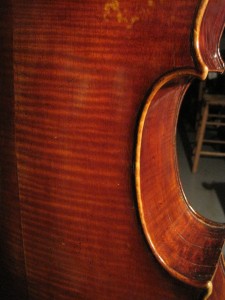
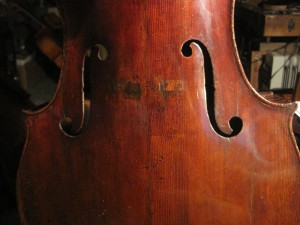
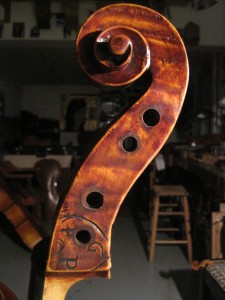 Lorne Munroe played this beautiful cello of Mateo Gofriller 1702 as principal cello for the Philadelphia Orchestra and the New York Philharmonic for decades. Gofriller- a contemporary of Stradivari – was the founder of the Venician school of violinmaking and he produced the most sought after cellos the world over. Their powerful arching, bold outline, deep red varnish are just some of the reasons the finest cellists are continually drawn to them. Venice is a fascinating place in that era -right there in the fluid area between Germany/Austria and Italy – with hints of this rich diversity in Mateo Gofriller’s very name.
Lorne Munroe played this beautiful cello of Mateo Gofriller 1702 as principal cello for the Philadelphia Orchestra and the New York Philharmonic for decades. Gofriller- a contemporary of Stradivari – was the founder of the Venician school of violinmaking and he produced the most sought after cellos the world over. Their powerful arching, bold outline, deep red varnish are just some of the reasons the finest cellists are continually drawn to them. Venice is a fascinating place in that era -right there in the fluid area between Germany/Austria and Italy – with hints of this rich diversity in Mateo Gofriller’s very name.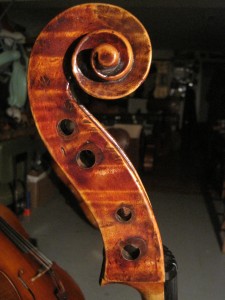
Mr Munroe tells a colorful tale of him first seeing this remakarble instrument at the Herrmann shop in New York in the early 1950’s but it was beyond his reach. He then found a lesser priced “Gofriller” at the Moennig shop in Phila that after purchasing it was deemed to be Venetian but not Gofriller. With his money refunded he went back to New York only to find the cello now for sale at Jacques Francais’ at a reduced price by an impatient consigner. His teacher, Gregor Piatagorsky, seeing an auspicious sign in the enigmatic medallion branded on the scroll will his initials G & P on it – liked the cello immensely and highly recommended it.
Mr Munroe came to me after admiring work I had done on a student’s cello and he entrusted his cello to me to glue a number of old cracks on the top which had come open – along with extensive bridge and varnish work. It was a treat to work on and live with such a fine instrument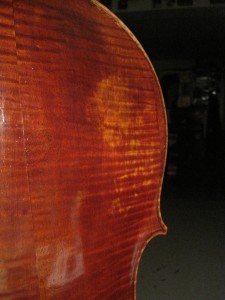
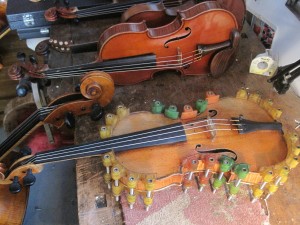
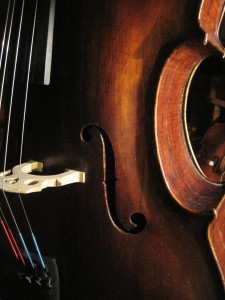
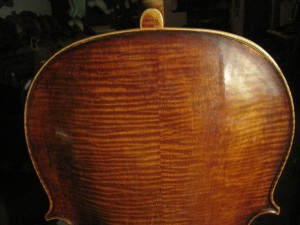
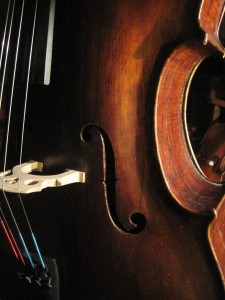
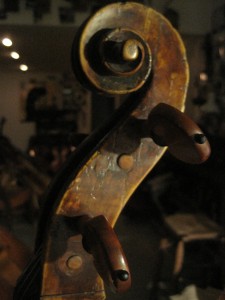
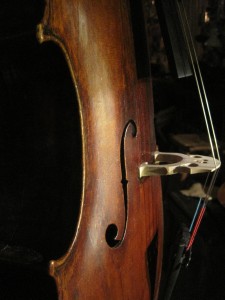
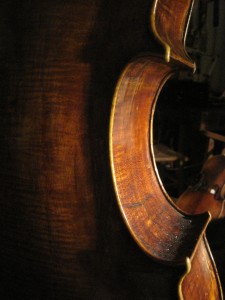
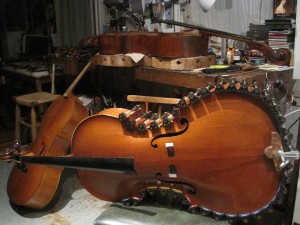
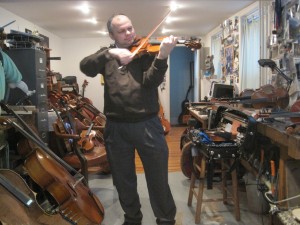

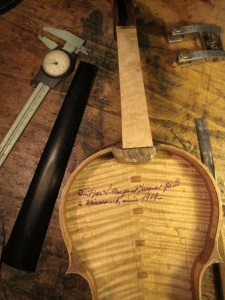
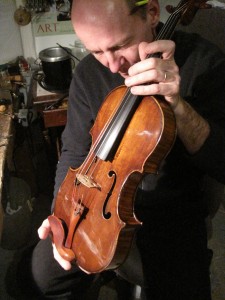
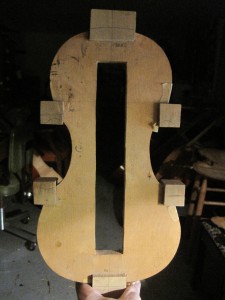
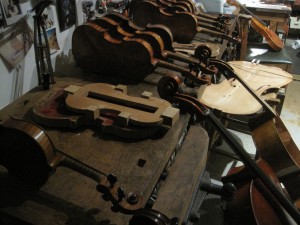
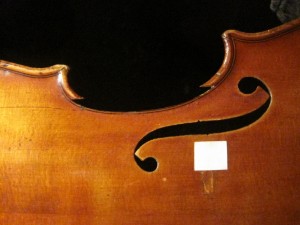


 Lorne Munroe played this beautiful cello of Mateo Gofriller 1702 as principal cello for the Philadelphia Orchestra and the New York Philharmonic for decades. Gofriller- a contemporary of Stradivari – was the founder of the Venician school of violinmaking and he produced the most sought after cellos the world over. Their powerful arching, bold outline, deep red varnish are just some of the reasons the finest cellists are continually drawn to them. Venice is a fascinating place in that era -right there in the fluid area between Germany/Austria and Italy – with hints of this rich diversity in Mateo Gofriller’s very name.
Lorne Munroe played this beautiful cello of Mateo Gofriller 1702 as principal cello for the Philadelphia Orchestra and the New York Philharmonic for decades. Gofriller- a contemporary of Stradivari – was the founder of the Venician school of violinmaking and he produced the most sought after cellos the world over. Their powerful arching, bold outline, deep red varnish are just some of the reasons the finest cellists are continually drawn to them. Venice is a fascinating place in that era -right there in the fluid area between Germany/Austria and Italy – with hints of this rich diversity in Mateo Gofriller’s very name.
